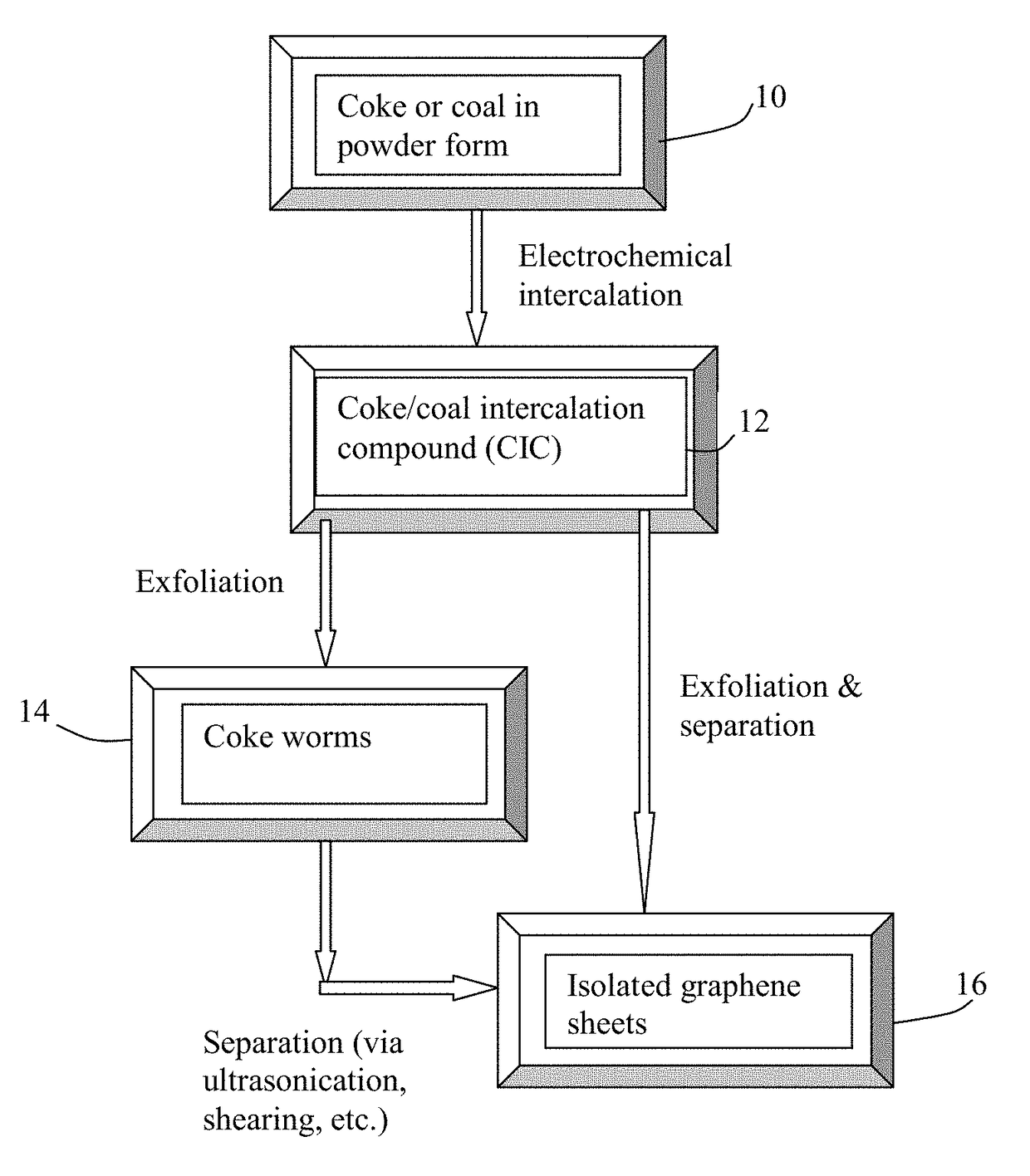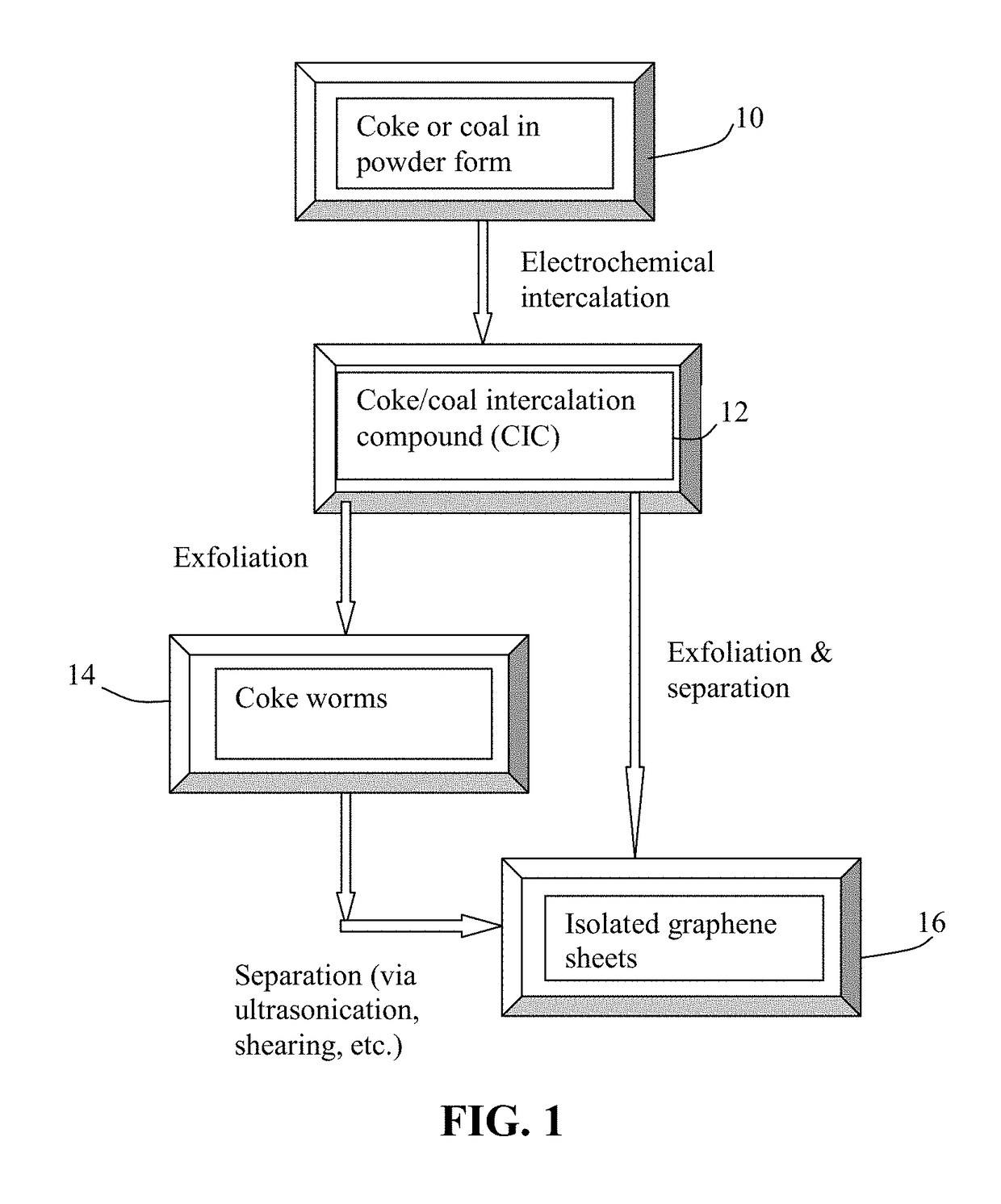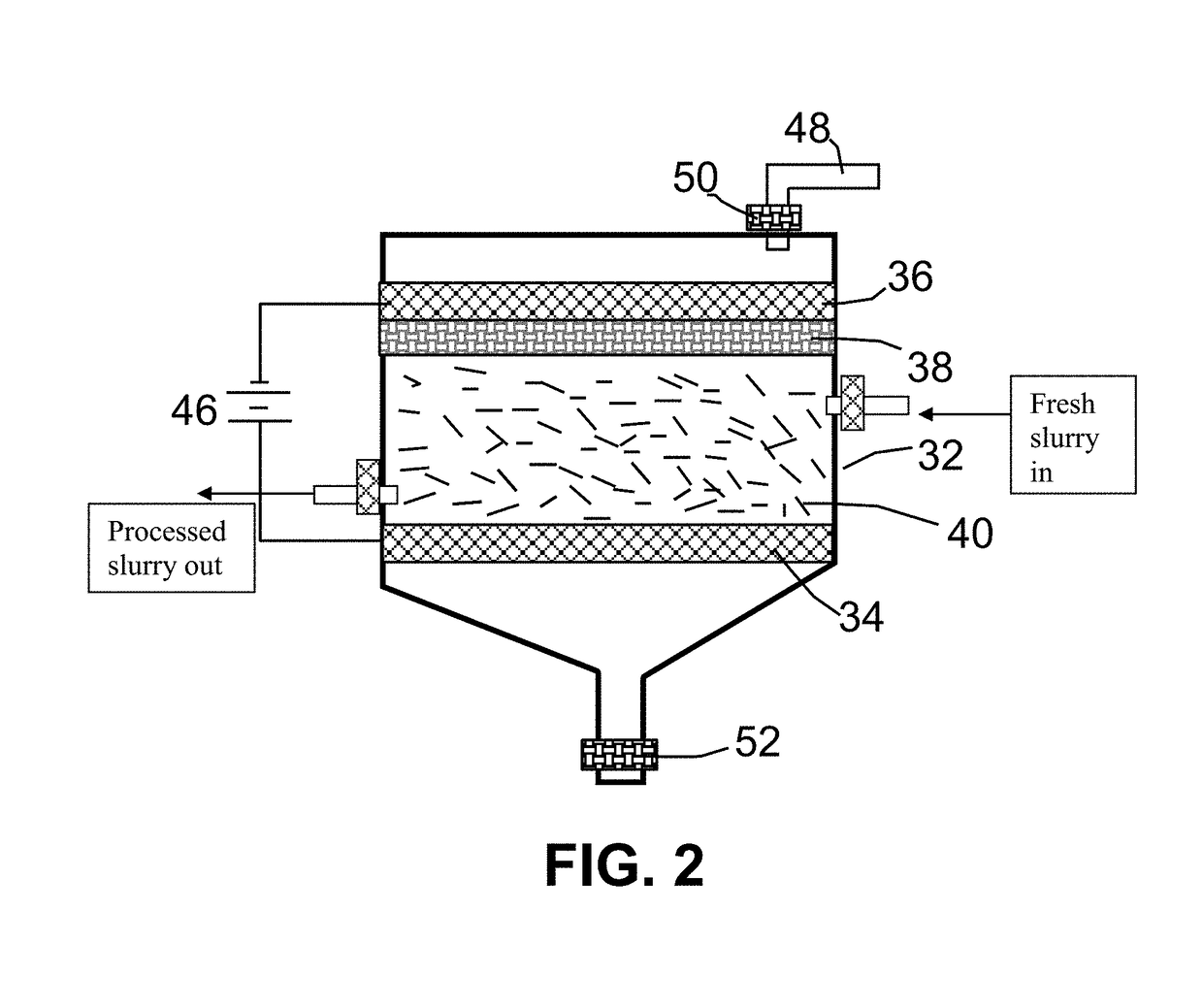Electrochemical Production of Graphene Sheets from Coke or Coal
a technology of electrochemical production and graphene, which is applied in the direction of graphene, electrolysis process, electrolysis components, etc., can solve the problems of inability to mass produce isolated graphene sheets for composite materials and energy storage applications, process is not suitable for mass production of isolated graphene sheets, and heat-induced exfoliation approaches require a very tedious washing and purification step, etc., to achieve the effect of promoting electrochemical intercalation, exfoliation and/or separation
- Summary
- Abstract
- Description
- Claims
- Application Information
AI Technical Summary
Benefits of technology
Problems solved by technology
Method used
Image
Examples
example 1
N OF ISOLATED GRAPHENE SHEETS FROM MILLED NEEDLE COKE POWDER
[0059]Needle coke, milled to an average length 4), sodium perchlorate (NaClO4), potassium perchlorate (KClO4), and their mixtures. The graphene plane wetting agents selected include melamine, sodium (ethylenediamine), and hexamethylenetetramine.
[0060]The anode supporting element is a stainless steel plate and the cathode is a graphite foam of approximately 4 cm in diameter and 0.2 cm in thickness, impregnated with lithium or sodium. The separator, a glass fiber fabric, was used to separate the cathode plate from the milled needle coke particles and to compress these particles down against the anode supporting element to ensure that the particles are in a good electrical contact with the anode supporting element to serve as the anode. The electrodes, electrolyte, and separator are contained in a Buchner-type funnel to form an electrochemical cell. The anode supporting element, the cathode, and the separator are porous to per...
example 2
SHEETS FROM MILLED LIGNITE COAL POWDER
[0070]In one example, samples of two grams each of lignite coal were milled down to an average diameter of 25.6 μm. The powder samples were subjected to similar electrochemical intercalation conditions described in Example 1, but with different alkali metal salts and solvents. The lignite coal powder samples were subjected to an electrochemical intercalation treatment at a current of 0.5 amps (current density of about 0.04 amps / cm2) and at a cell voltage of about 5 volts for 3 hours. Following the electrochemical intercalation treatment, the resulting intercalated powder was removed from the electrochemical reactor and dried.
[0071]Subsequently, the coal intercalation compound was transferred to a furnace pre-set at a temperature of 950° C. for 45 seconds. The compound was found to induce rapid and high expansions of graphite-like crystallites with an expansion ratio of greater than 30. After a mechanical shearing treatment in a high-shear rotati...
example 3
N OF ISOLATED GRAPHENE SHEETS FROM ELECTROCHEMICAL INTERACTION, Exfoliation, and Separation of Milled Petroleum Needle Coke in an Aqueous Electrolyte Solution
[0074]Samples of two grams each of needle coke powder were milled down to an average length of 36 μm. The powder samples were subjected to electrochemical intercalation in aqueous electrolyte. A broad array of metal halide salts were dissolved in deionized water to form a liquid electrolyte. The wetting agents investigated include ammonia, ammonium sulfate, and sodium dodecyl sulfate. The graphite ore samples were subjected to an electrochemical intercalation treatment at a current of 0.5 amps (current density of about 0.04 amps / cm2) and at a cell voltage of about 1.8 volts for 3 hours. Following the electrochemical intercalation treatment, the resulting intercalated coke (mostly Stage-1 CIC with some Stage-2) was removed from the electrochemical reactor and dried.
[0075]Subsequently, the intercalated compound was transferred to...
PUM
| Property | Measurement | Unit |
|---|---|---|
| Temperature | aaaaa | aaaaa |
| Time | aaaaa | aaaaa |
| Percent by mass | aaaaa | aaaaa |
Abstract
Description
Claims
Application Information
 Login to View More
Login to View More - R&D
- Intellectual Property
- Life Sciences
- Materials
- Tech Scout
- Unparalleled Data Quality
- Higher Quality Content
- 60% Fewer Hallucinations
Browse by: Latest US Patents, China's latest patents, Technical Efficacy Thesaurus, Application Domain, Technology Topic, Popular Technical Reports.
© 2025 PatSnap. All rights reserved.Legal|Privacy policy|Modern Slavery Act Transparency Statement|Sitemap|About US| Contact US: help@patsnap.com



